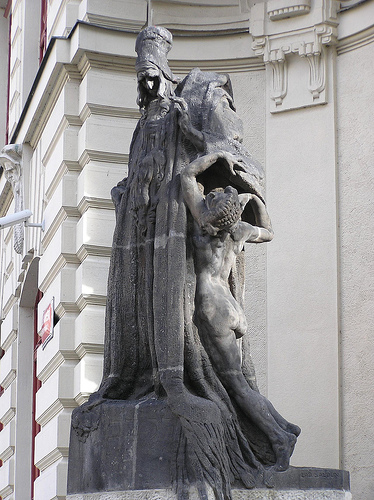We’ve discussed before the question of what constitutes the “image of God” inscribed in the human body. The issue came up in the context of devotees of theistic evolution like Francis Collins or Kenneth Miller who say there’s no problem for their Biblical faith in thinking God relied on a chance-driven evolutionary process to produce a creature He could relate to as in fact He does to man. This chancy, highly contingent process, described by Darwin, was bound to converge on some intelligent being, but it could have been a squid, a dinosaur, or some other unimagined monster. That would have been just fine with God.
So goes the theistic evolutionary thesis.
I’ve argued that Biblical tradition pretty conclusively indicates that in shaping life’s history,
God had in mind a particular creature — us — and this is indicated by the enigmatic Scriptural phrase “image of God,” a quality that we somehow carry with us. I did not suggest how the human face, or hands and feet, reflect this image, because I’m not sure how exactly that works. It is much easier to say how our posture, unique in the world of creatures, bears witness to our human mission on earth.
The
Maharal, who lived in the 16th century (that’s him pictured above), defines the Godly “image” (
tzelem), at least in part, as residing in our standing and walking erect. This is the same Rabbi Judah Lowe of Prague (Maharal is an acronym) credited in Jewish lore with creating the
Golem. He discusses the question in his book
Be’er ha’Golah, among other places, explaining that it is because of man’s having been granted kingship over this lower world in which live that animals walk crouched over, to one degree or another, while humans uniquely stand up straight:
Man stands upright, straight, like a pillar that is upright, which is not the case with any other being, as none of them stand up straight but rather all walk hunched over. And this is an indication of the [exalted] level of man, for man is king over the lower plane of existence, and all serve him….This is called the “image of God.”
Needless to say, neither an octopus nor a dinosaur, however brainy, would fit this criterion. And isn’t it interesting that the same folks who most fervently deny the divine image in man also deny our special deputized role in God’s world, as of course they deny God altogether.
Peter Singer would be a handy illustration.


